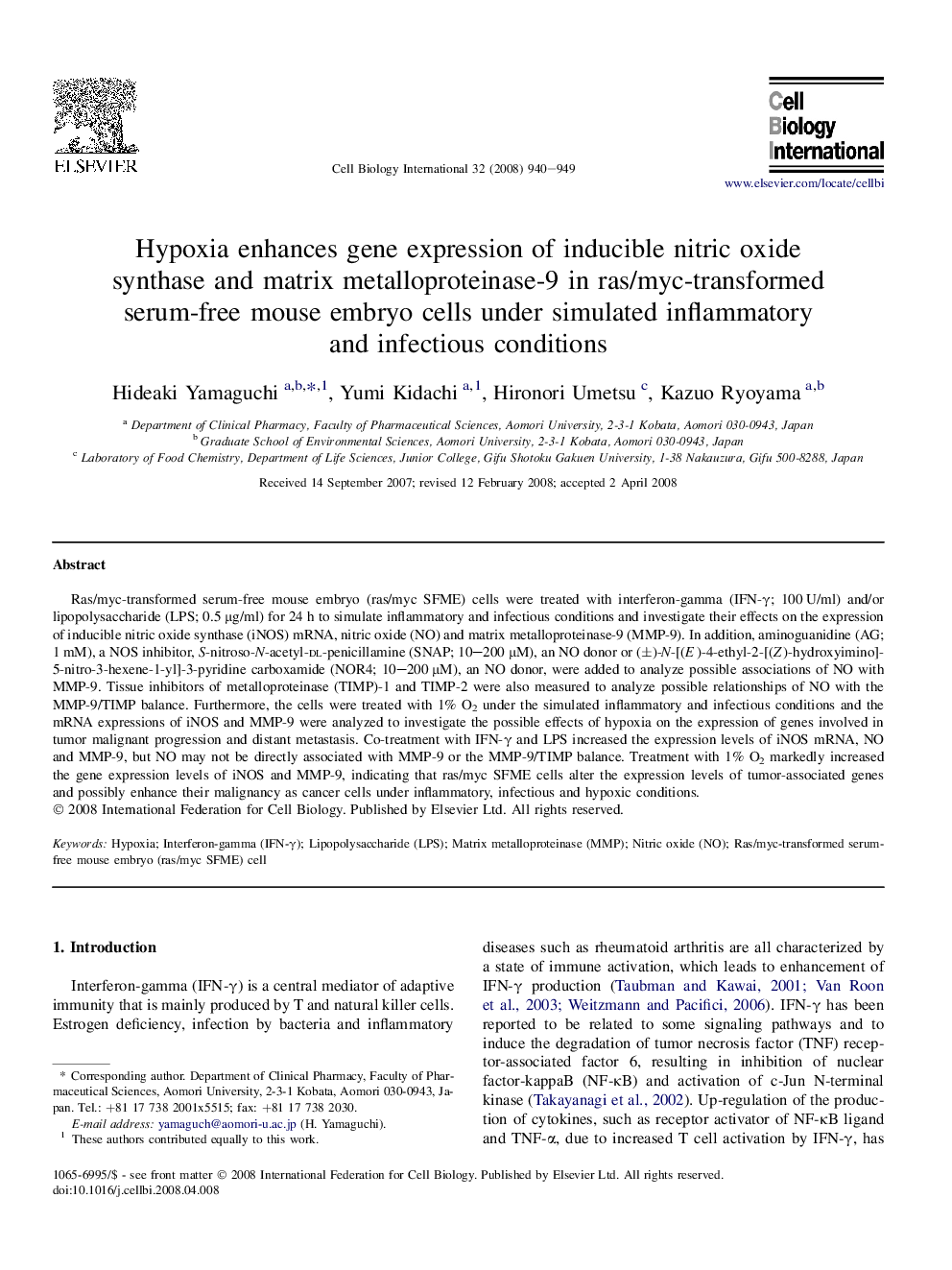| Article ID | Journal | Published Year | Pages | File Type |
|---|---|---|---|---|
| 2067309 | Cell Biology International | 2008 | 10 Pages |
Abstract
Ras/myc-transformed serum-free mouse embryo (ras/myc SFME) cells were treated with interferon-gamma (IFN-γ; 100 U/ml) and/or lipopolysaccharide (LPS; 0.5 μg/ml) for 24 h to simulate inflammatory and infectious conditions and investigate their effects on the expression of inducible nitric oxide synthase (iNOS) mRNA, nitric oxide (NO) and matrix metalloproteinase-9 (MMP-9). In addition, aminoguanidine (AG; 1 mM), a NOS inhibitor, S-nitroso-N-acetyl-dl-penicillamine (SNAP; 10-200 μM), an NO donor or (±)-N-[(E)-4-ethyl-2-[(Z)-hydroxyimino]-5-nitro-3-hexene-1-yl]-3-pyridine carboxamide (NOR4; 10-200 μM), an NO donor, were added to analyze possible associations of NO with MMP-9. Tissue inhibitors of metalloproteinase (TIMP)-1 and TIMP-2 were also measured to analyze possible relationships of NO with the MMP-9/TIMP balance. Furthermore, the cells were treated with 1% O2 under the simulated inflammatory and infectious conditions and the mRNA expressions of iNOS and MMP-9 were analyzed to investigate the possible effects of hypoxia on the expression of genes involved in tumor malignant progression and distant metastasis. Co-treatment with IFN-γ and LPS increased the expression levels of iNOS mRNA, NO and MMP-9, but NO may not be directly associated with MMP-9 or the MMP-9/TIMP balance. Treatment with 1% O2 markedly increased the gene expression levels of iNOS and MMP-9, indicating that ras/myc SFME cells alter the expression levels of tumor-associated genes and possibly enhance their malignancy as cancer cells under inflammatory, infectious and hypoxic conditions.
Keywords
Related Topics
Life Sciences
Biochemistry, Genetics and Molecular Biology
Biophysics
Authors
Hideaki Yamaguchi, Yumi Kidachi, Hironori Umetsu, Kazuo Ryoyama,
